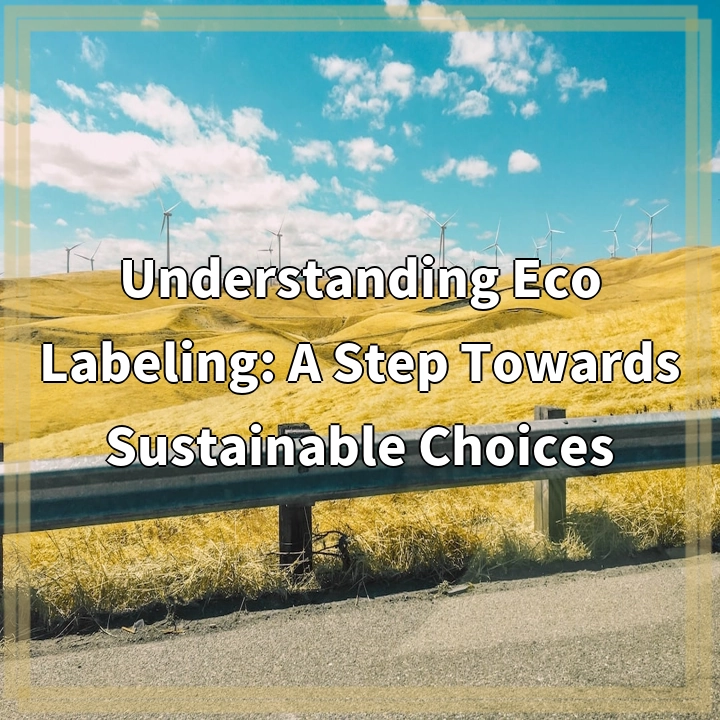
What is Eco Labeling?
Eco labeling is a voluntary certification system used to identify products and services that have undergone and met specific environmental standards. It aims to help consumers make informed choices by providing information about the environmental impact of a product or service throughout its lifecycle. These labels typically display relevant information such as energy efficiency, recyclability, carbon footprint, and whether the product was produced sustainably or with ethically sourced materials. By incorporating eco labels, consumers can identify environmentally friendly options and support companies committed to sustainability.
Real-World Problems Associated with Eco Labeling
While eco labeling is a positive step towards promoting sustainable choices, there are some challenges and drawbacks associated with its implementation. Understanding these problems is crucial to ensure the effectiveness and integrity of the eco labeling system.
Lack of Uniform Standards
One of the significant challenges is the lack of uniform standards across different eco labeling programs. As multiple organizations and certification bodies develop their own criteria and labels, it can be confusing and difficult for consumers to navigate through the various certifications. This can lead to greenwashing, where products are labeled as environmentally friendly without meeting rigorous standards, undermining the trust of consumers.
Incomplete Lifecycle Assessment
Eco labeling often focuses on specific aspects of a product’s environmental impact, such as energy consumption or material sourcing, without providing a comprehensive view of its entire lifecycle. This can create a distorted perception of a product’s true sustainability, as other significant factors like transportation, manufacturing processes, and disposal methods may not be adequately addressed. A holistic approach to eco labeling, considering the entire lifecycle and supply chain, would provide consumers with more accurate information to make truly sustainable choices.
Limited Regulatory Oversight
Currently, eco labeling is mainly a self-regulated system, with limited government oversight. This lack of regulatory control can lead to inconsistencies, false claims, and the potential for greenwashing. Establishing robust monitoring and enforcement mechanisms to ensure compliance with eco labeling standards is crucial to maintain the integrity and trustworthiness of the system.
In conclusion, eco labeling is a valuable tool for consumers seeking sustainable choices. However, it is essential to address the challenges associated with uniform standards, incomplete lifecycle assessment, and limited regulatory oversight to enhance the credibility and effectiveness of eco labeling programs. By collectively working towards improved transparency, consistency, and public education, eco labeling can continue to be a step towards a more sustainable future.

Solutions to Address the Problems of Eco Labeling
To tackle the real-world problems associated with eco labeling, several solutions can be implemented to enhance the credibility and effectiveness of the system.
Standardization and Transparency
Implementing standardized criteria and guidelines for eco labeling programs would help create consistency and clarity for consumers. Establishing transparent processes for certification, including clear documentation of the assessment methods and criteria, would ensure that labels are trustworthy and meet rigorous standards. Collaborating with international organizations and regulatory bodies can also help harmonize eco labeling practices on a global scale.
Comprehensive Lifecycle Assessment
Moving towards a more comprehensive lifecycle assessment approach in eco labeling would provide a more accurate picture of a product’s sustainability. This would involve considering all stages of a product’s lifecycle, including sourcing, manufacturing, distribution, use, and disposal. Encouraging companies to disclose information about their supply chain and environmental impacts at each stage would provide consumers with a more informed understanding of a product’s overall sustainability.
Government Regulations and Oversight
Increasing government involvement and regulatory oversight can help ensure the integrity of eco labeling programs. Developing clear guidelines for certification bodies, monitoring compliance with established standards, and implementing penalties for false or misleading claims can help prevent greenwashing and maintain consumer trust. Governments can also support public education initiatives to raise awareness about eco labeling and promote informed consumer choices.
In conclusion, addressing the problems of eco labeling requires standardization, transparency, comprehensive lifecycle assessment, and increased government regulations and oversight. By implementing these solutions, eco labeling can effectively contribute to sustainable choices and empower consumers to make informed decisions that benefit the environment and society as a whole.















